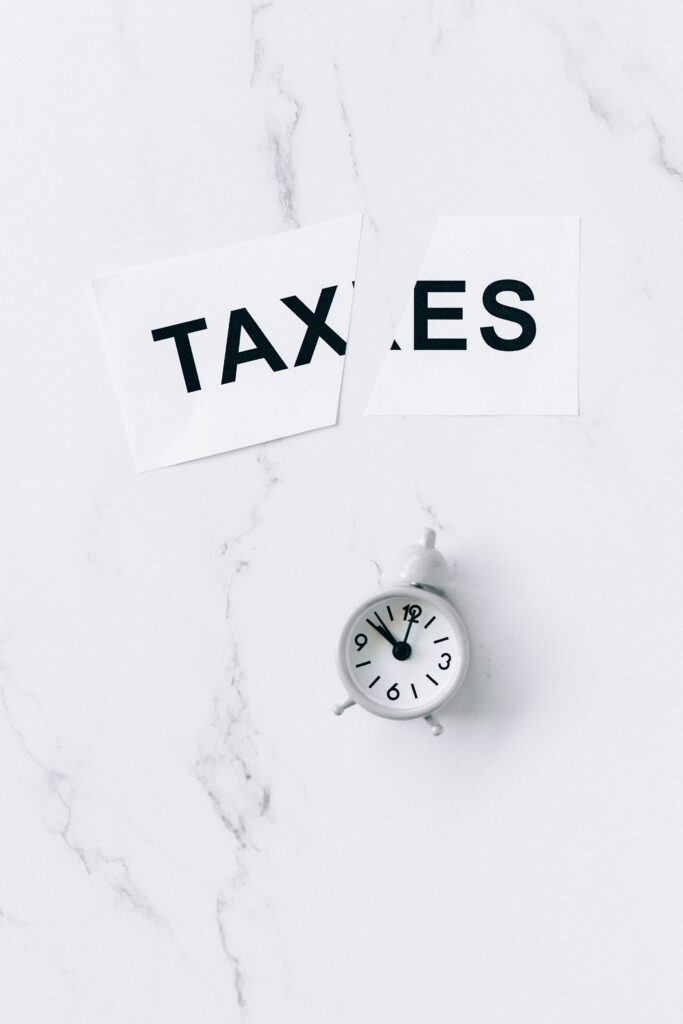As an entrepreneur, it’s crucial to understand self-employment tax. This tax is imposed on individuals who work for themselves, and unlike employees, they’re responsible for paying both the employer and employee portions of Social Security and Medicare taxes. To minimize your tax burden and maximize savings, it’s essential to know how self-employment tax works and explore effective strategies. Don’t let self-employment tax hinder your success; take control of your finances today!
Understand Self-Employment Tax
This tax is calculated based on a percentage of your net earnings from self-employment, including income from freelancing or a business venture. As of 2023, the self-employment tax rate is 15.3%, with 12.4% going toward Social Security and 2.9% toward Medicare. However, savvy self-employed individuals may be able to deduct half of their self-employment tax on their income tax return.
If you earn more than $400 in net self-employment income per year, you’re required to pay self-employment tax as a sole proprietor, partner in a partnership, or member of an LLC taxed as a partnership or sole proprietorship. Corporations generally don’t pay this type of tax but do require their employees to pay Social Security and Medicare taxes through their paychecks.
It’s essential to understand the difference between self-employment tax and income tax if you’re an entrepreneur. While self-employment tax is based on your net earnings from self-employment, income tax is calculated after deductions and credits on your total income. Self-employed individuals are subject to both taxes, which can add up quickly without proper planning. By comprehending these differences and exploring effective strategies for minimizing taxes while maximizing savings, entrepreneurs can take control of their finances and achieve greater success!
Strategies for Reducing Self-Employment Tax

Entrepreneurs, keep more of your hard-earned money by minimizing self-employment tax. Consider these strategies:
Maximizing Deductions
Maximizing your deductions is a powerful way to reduce self-employment tax. Claiming more deductions means less taxable income and, ultimately, less tax owed.
Business Expenses
Track all business expenses, including office supplies, travel, and equipment purchases. Deducting these from self-employment income reduces tax liability.
Home Office Deduction
Using a dedicated space in your home solely for business purposes may qualify you to deduct a portion of your home expenses, such as rent, utilities, and internet costs.
Retirement Plan Contributions
By making contributions to a retirement plan like a solo 401(k) or a SEP IRA, you can not only save for the future but also reduce your self-employment tax bill. Such contributions are deductible and help lower your taxable income and self-employment tax.
Utilizing Tax Credits
Tax credits can be an effective means of lowering your tax liability by directly reducing the amount of tax you owe. This makes them a valuable tool for minimizing your self-employment tax bill.
Health Insurance Tax Credit
Self-employed individuals who pay for their own health insurance may qualify for the health insurance tax credit, which can substantially decrease their tax liability and make obtaining health insurance more affordable.
Retirement Plan Tax Credit
Individuals with low to moderate income who contribute to a retirement plan may be eligible for the retirement savings contributions credit. This credit can reduce their tax bill by as much as $1,000.
Structuring Your Business
Your self-employment tax liability can be affected by the structure of your business. Here are some options to consider:
Choosing the Right Business Entity
Forming an LLC or S Corporation may be worth considering based on your business goals and circumstances. These structures can offer liability protection and potential tax benefits, such as lower self-employment tax rates.
Splitting Income Among Family Members
Compensating family members who are part of your business through a salary or wages can be beneficial in reducing your taxable income and self-employment tax liability.
Hiring Independent Contractors Instead of Employees
Hiring employees can have advantages for your business, but it may also lead to higher payroll taxes and self-employment tax liability. If this is a concern, you may want to consider hiring independent contractors who are responsible for their own self-employment tax payments.
Tax Credits for Self-Employed Individuals

If you’re self-employed, it’s essential to know that you may qualify for specific tax credits that can assist in lowering your overall tax obligation. Below are some examples of such credits to keep in mind:
Earned Income Tax Credit (EITC)
The Earned Income Tax Credit (EITC) is a tax credit intended for individuals with low to moderate income. Its purpose is to assist in covering living expenses and offer financial support to families and individuals. Below are some critical facts about the EITC that you should be aware of:
Definition and requirements for EITC
To be eligible for the EITC, you must have earned income from work and meet specific income and filing criteria. Additionally, possessing a valid Social Security number is mandatory. The amount of credit you may claim is determined by your income level, family size, and filing status, as the EITC is a refundable tax credit.
How to calculate and claim EITC
There are two ways to determine your EITC amount: utilizing the EITC Assistant tool available on the IRS website or seeking assistance from a tax professional. To claim the credit, you must complete Form 1040, Schedule EIC, and file a tax return.
Eligibility and limitations for self-employed individuals
If self-employed individuals meet the income and other prerequisites, they may be qualified for the EITC. Nevertheless, computing the credit can be more intricate for them since their income might fluctuate annually.
Child and Dependent Care Tax Credit
The Child and Dependent Care Tax Credit is a tax credit that helps offset the cost of childcare expenses. Here are some important points to know about the tax credit:
Definition and requirements for the child and dependent care tax credit
The Child and Dependent Care Tax Credit is a tax credit that cannot be refunded, intended for individuals who cover childcare expenses for a qualifying dependent or child. To qualify, you must have earned income, and the child or dependent must meet specific requirements. The credit amount is determined by your income level and the expenses that you paid.
How to calculate and claim the credit
To determine your Child and Dependent Care Tax Credit, complete Form 2441 and attach it to your tax return. This form will require you to provide details about the childcare provider, as well as information on the expenses that you paid.
Eligibility and limitations for self-employed individuals
If they meet the requirements, self-employed individuals can claim the Child and Dependent Care Tax Credit. However, if you are eligible for your employer’s Dependent Care Assistance Program (DCAP) or use a dependent care flexible spending account (FSA), the credit may be limited.
Strategies for Maximizing Savings

For self-employed individuals, saving money can be challenging, but it is crucial for achieving financial stability and security. Here are a few strategies that can help you maximize your savings:
Saving for retirement
Individual retirement accounts (IRAs)
Individual Retirement Accounts (IRAs) provide tax-deferred growth, meaning you won’t pay taxes on the earnings until you withdraw them. Additionally, IRA contributions may be tax deductible, resulting in potential tax savings.
Simplified Employee Pension (SEP) IRA
A Simplified Employee Pension (SEP) IRA is a retirement plan that permits contributions of up to 25% of your net self-employment income, with a maximum contribution limit of $66,000 (in 2023).
Solo 401k plan
A Solo 401k plan is a specialized retirement plan created for self-employed individuals and business owners without full-time employees. It offers the flexibility to contribute as both an employer and an employee, with a maximum contribution limit of $66,000 or $73,500 if you’re 50 or above (in 2023).
Health Savings Accounts (HSAs)
HSAs are savings account that provides tax benefits and can be utilized for eligible medical expenses. Contributions are deductible from taxes, and withdrawals made towards qualified medical expenses are exempt from taxation.
Investing in your business
Reinvesting profits
Plowing your profits back into your business can facilitate growth and expansion while reducing your taxable income.
Expanding your business
Broadening the scope of your business operations can augment your earnings and open up fresh avenues for development.
Diversifying your income streams
Introducing variety into your revenue streams can mitigate your dependence on a single source of income and serve as a safety net in case one stream falters.
Conclusion
As a self-employed individual, reducing tax liability and maximizing savings are crucial for financial success. Throughout this article, we’ve explored various strategies to help entrepreneurs achieve these goals. By understanding self-employment tax and the difference between self-employment tax and income tax, entrepreneurs can make informed decisions that can help reduce their tax liability. Strategies such as maximizing deductions, utilizing tax credits, and structuring your business can also help minimize self-employment tax.
In addition to these strategies, there are many opportunities for self-employed individuals to maximize savings. Saving for retirement through individual retirement accounts (IRAs), Simplified Employee Pension (SEP) IRAs, Solo 401k plans, and investing in your business are some effective methods. Health Savings Accounts (HSAs) can also provide significant tax savings for qualified people. However, it’s essential to stay organized and make estimated tax payments on time to avoid penalties and interest charges.
To conclude, minimizing self-employment tax and maximizing savings requires careful planning, informed decision-making, and a commitment to ongoing financial management. By taking the steps outlined in this article and seeking professional advice and guidance from qualified experts in the field of taxation and finance management, self-employed individuals can take control of their finances and achieve their long-term financial goals.






4 Responses
Your article says self-employment tax can be reduced by making solo 401(k) contributions. That seems contrary to IRS rules.
Thanks for your comment, RK. We mean that your self-employment taxable income is able to be reduced by making 401k contributions. Appreciate your asking for clarification!
How can small business owners ensure compliance with tax regulations and take advantage of available deductions and credits to reduce their tax burden?
I read an article on your website and I am very impressed by your blog.
Start with a positive remark or a compliment. For example, you can say something like “This article was very helpful and informative. Thank you for sharing it.” or “I enjoyed reading this article. It gave me a lot of insights into self-employment.”
I have written an article about freelancing.
https://brightwithus.com/what-is-self-employment-definition-types-and-benefits/